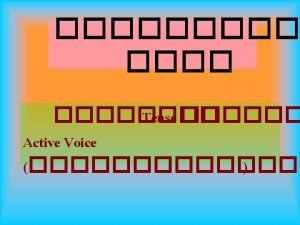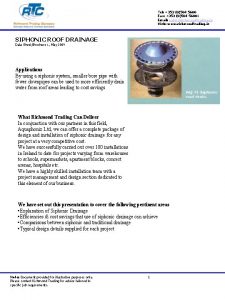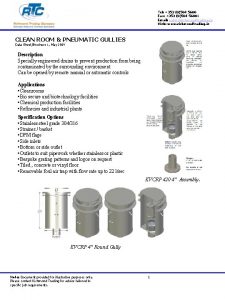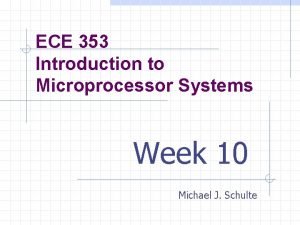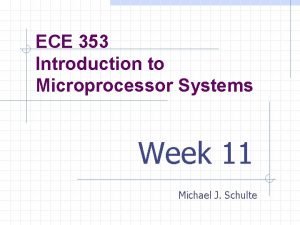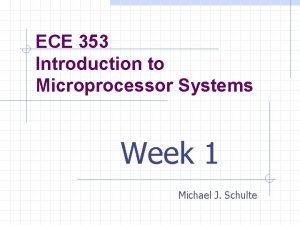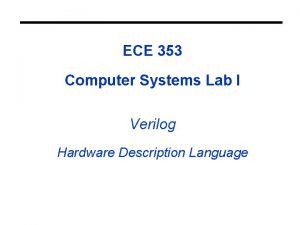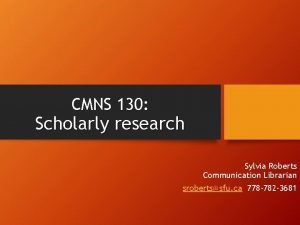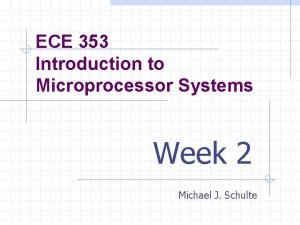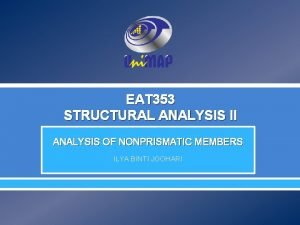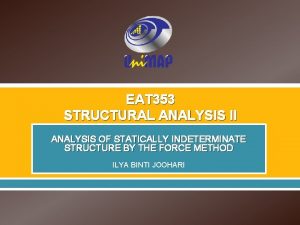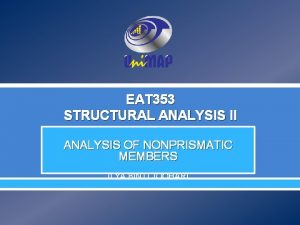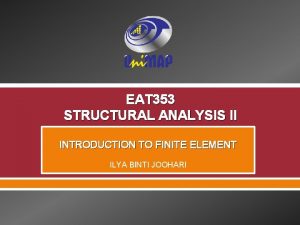EAT 353 STRUCTURAL ANALYSIS II INTRODUCTION TO STRUCTURAL
















- Slides: 16

EAT 353 STRUCTURAL ANALYSIS II INTRODUCTION TO STRUCTURAL ANALYSIS INDETERMINATE (STATICALLY STRUCTURE) ILYA BINTI JOOHARI

LESSON OUTCOME Discuss on stability and determinacy of structures. Discuss the merits of using indeterminate structures and two fundamental ways in which they may be analyzed.

INTRODUCTION If the number of independent static equilibrium equations is not sufficient for solving for all the external and internal forces (support reactions and member forces, respectively) in a system, then the system is said to be statically indeterminate. A statically determinate system, as against an indeterminate one, is that for which one can obtain all the support reactions and internal member forces using only the static equilibrium equations.

INTRODUCTION (CONT. ) The following figures illustrate some example of statically determinate and indeterminate structures. Statically determinate Statically indeterminate

INTRODUCTION (CONT. )

INTRODUCTION (CONT. ) In this section we will discuss the merits of using indeterminate structures and two fundamental ways in which they may be analyzed. Realize that most of the structures designed today are statically indeterminate. This indeterminacy may arise as a result of added supports or members, or by the general form of the structure. For example, reinforced concrete buildings are almost always statically indeterminate since the columns and beams are poured as continuous members through the joints and over

INTRODUCTION (CONT. )

ADVANTAGES For a given loading the maximum stress and deflection of an indeterminate structure are generally smaller than those of its statically determinate counterpart. The structure has a tendency to redistribute its load to its redundant supports in cases where faulty design or overloading occurs. In these cases, the structure maintains its stability and collapse is prevented. This is particularly important when sudden lateral loads, such as wind or earthquake, are imposed on the structure.

ADVANTAGES (CONT. ) Indeterminate structures can support a loading with thinner members and with increased stability compared to their statically determinate counterparts

DISADVANTAGES The cost savings in material must be compared with the added cost necessary to fabricate the structure, since oftentimes it becomes more costly to construct the supports and joints of an indeterminate structure compared to one that is determinate. More important, though, because statically indeterminate structures have redundant support reactions, one has to be very careful to prevent differential displacement of the supports, since this effect will introduce internal stress in the structure.

METHODS OF ANALYSIS When analysing any indeterminate structure, it is necessary to satisfy equilibrium, compatibility, and force-displacement requirements for the structure. Equilibrium is satisfied when the reactive forces hold the structure at rest. Compatibility is satisfied when the various segments of the structure fit together without intentional breaks or overlaps. The force-displacement requirements depend upon the way the material responds; in this text we have assumed linear elastic response.

METHODS OF ANALYSIS (CONT. ) In general there are two different ways to satisfy these requirements when analyzing a statically indeterminate structure: the force or flexibility method, and the displacement or stiffness method.

FORCE METHOD The force method was originally developed by James Clerk Maxwell in 1864 and later refined by Otto Mohr and Heinrich Müller-Breslau. This method consists of writing equations that satisfy the compatibility and force-displacement requirements for the structure in order to determine the redundant forces. Once these forces have been determined, the remaining reactive forces on the structure are determined by satisfying the equilibrium requirements.

DISPLACEMENT METHOD The displacement method of analysis is based on first writing force-displacement relations for the members and then satisfying the equilibrium requirements for the structure. In this case the unknowns in the equations are displacements. Once the displacements are obtained, the forces are determined from the compatibility and force displacement equations.

FORCE METHOD vs. DISPLACEMENT METHOD Unknowns Equations Used for Solution Coefficients of the Unknowns Force Method Forces Compatibility and Force Displacement Flexibility coefficients Displacement Method Displacements Equilibrium and Force Displacement Stiffness coefficients

END

